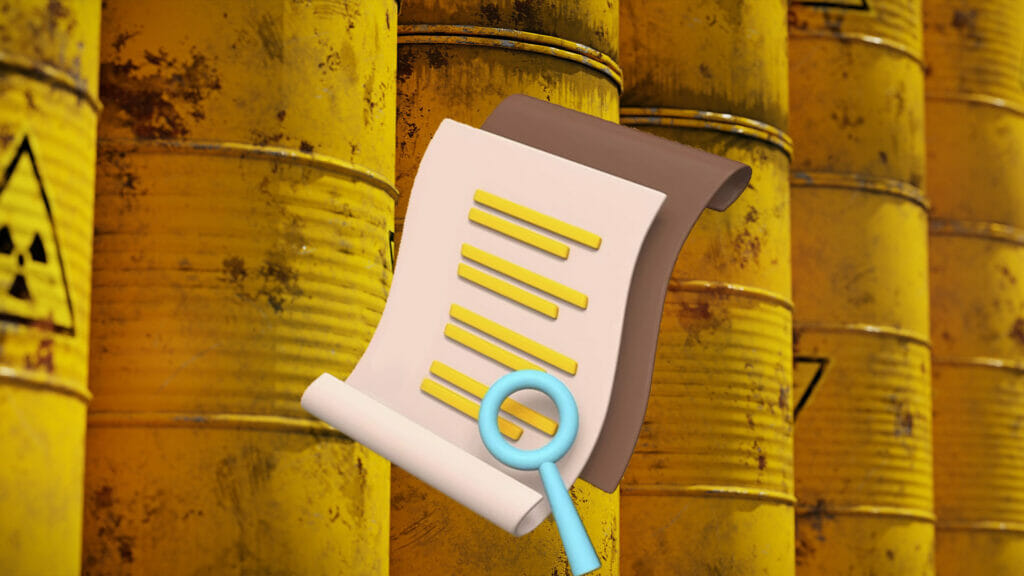Kazakhstan plans to certify its LEU Bank once again

The International Atomic Energy Agency (IAEA) Low Enriched Uranium (LEU) Bank located in Kazakhstan will be certified once again in 2024, Kazatomprom said in a statement.
«In 2023, the first stage of repeated certification of nuclear fuel was conducted at the LEU Bank. For the first time in the world’s history, such a certification was conducted at full nuclear fuel cylinders. The second stage of repeated certification is expected in 2024,» the company reported.
On September 25, the 67th Regular Sessions of the IAEA General Conference was opened in Vienna, Austria. Each year delegates from 177 IAEA member states gather here to share their views on the nuclear industry. Kazakhstan is represented by Energy Minister Almasadam Satkaliyev, CEO of the holding Samruk Kazyna Nurlan Zhakupov, CEO of Kazatomprom Yerzhan Mukanov and a group of officials from the Ministry of Foreign Affairs, National Nuclear Center, Institute of Nuclear Physics and Mangystau Nuclear Power Plant.
During the first day of the conference, delegates discussed issues related to the LEU Bank located at the Ulba Metallurgical Plant (UMZ, a subsidiary of Kazatomprom) in Oskemen, Kazakhstan. The bank has been working since 2019 in order to provide IAEA member states, which do not have access to uranium enrichment technology, with raw materials for the production of nuclear fuel. The LEU Bank possesses 90 metric tons of low-enriched uranium, which is less than 10% of the uranium UMZ once kept in its stocks.
«Nuclear fuel banks won’t disrupt market mechanisms of the nuclear industry and will be a good alternative for the proliferation of sensitive technologies. Reserves of the IAEA LEU Bank are going to facilitate the development of peaceful nuclear energy and expand access to peaceful nuclear technologies. Moreover, the establishment of the LEU Bank won’t prevent other IAEA member states from developing their capabilities in the nuclear fuel cycle. We believe that this multistakeholder mechanism shouldn’t be politiсized or discriminatory. It should be open for every state that complies with IAEA safeguard agreements,» CEO of Kazatomprom Yerzhan Mukanov said.
In turn, Deputy Director General of the IAEA Mikhail Chudakov noted that the LEU Bank is one of several options for nuclear fuel supply but it is special due to the fact that it belongs to the IAEA and is fully controlled by the agency, which means that it meets all the safety and security requirements of the agency. Kazakhstan’s Energy Minister Almasadam Satkaliyev also highlighted that the country is a coherent supporter of global nuclear security.
«Since the day of the declaration of our independence, Kazakhstan has demonstrated peaceful foreign policy that determines its principles and adherence to international rules. The IAEA’s decision to place the LEU Bank at the Ulba Metallurgical Plant is a sign that the agency acknowledges that the plant’s security system meets international requirements, while its personnel are highly qualified and trained,» he said.
According to Nurlan Zhakupov, CEO of the holding Samruk Kazyna, Kazakhstan accounts for more than 40% of uranium production which makes the country the leading producer of uranium in the world. As the official highlighted, the country is adherent to the peaceful use of nuclear energy under IAEA supervision.
The 67th Regular Session of the IAEA General Conference will last from September 25 to September 29 and as expected will lead to a number of decisions that will facilitate the development of the nuclear industry throughout the world. In February and March of this year, the IAEA’s mission worked in Kazakhstan in order to assess whether the country was ready for the construction of its first nuclear power plant.
In December 2022, Shayakhmet Shiganakov, a representative of the Nuclear Technology Safety Center (NTSC) in Astana, said that a mission from the IAEA would visit Kazakhstan in the first quarter of 2023. The mission was going to review the current status of the country’s nuclear infrastructure and verify what Kazakhstan has done to implement recommendations the previous IAEA mission had given the country in 2016.
«In the first quarter of 2023, the second IAEA mission would come to Kazakhstan. They want to review our nuclear infrastructure and, likely, we will receive more specific recommendations from IAEA representatives and experts,» Shiganakov said in December during a round table of nuclear energy issues.
The first IAEA Integrated Nuclear Infrastructure Review (INIR) mission to Kazakhstan took place in 2016. Even though there is no commercial-grade nuclear power plant in Kazakhstan, the country has seven small scientific nuclear reactors which were reviewed by international experts at the time. Kazakhstan has been thinking about a nuclear plant for years. Given the energy consumption forecast, the country plans to launch a 2.4-gigawatt nuclear plant by 2035. The local government has to make a final decision about the plant by the end of this year. Each of the two 1.2-gigawatt reactors may cost about $5 billion and would take ten years to build.
The first mission had developed about 20 different recommendations and suggestions, including several recommendations aimed at the improvement of the country’s legislation. At the same time, the mission highlighted some positive developments in Kazakhstan that might be helpful for other countries. For example, Kazakhstan established a nuclear plant operating organization (Kazakhstan Nuclear Power Plants LLP) back in 2014, even though there aren’t any real nuclear plants in the country yet. Usually, such entities emerge only when a nuclear plant is in place. In addition, Kazakhstan is quite active in promoting nuclear energy. The government, for instance, organized many trips to foreign nuclear plants for representatives of the nongovernmental sector.
According to Shiganakov, the first IAEA mission helped to understand that before a final decision about a nuclear plant is made, the country has to prepare a comprehensive report on the issue. The preparation of this document is currently in progress. Second, the country desperately needs to improve its regulatory framework for nuclear power. Third, serious attention must be paid to the issue of nuclear waste disposal.
«The situation in this sphere is very bad. We haven’t done the job. We still rely on an outdated legal framework for nuclear waste disposal developed between the 1950s and 1980s. This is a huge problem for Kazakhstan,» said Shiganakov, who also highlighted that the country hasn’t implemented the IAEA recommendations in this sphere.
Fourth, the country has to improve the structure of its regulatory body if the government makes a positive decision concerning a nuclear plant. So far, the country is at the very first phase of the process. Once the final decision is made, the government will be required to organize bidding. That’s the second phase. The third phase is the construction of a plant. The IAEA representatives can visit Kazakhstan at any phase.
By now, Kazakhstan has chosen the Ulken settlement in the Almaty region as a site for the future nuclear plant. The small town of Kurchatov on the bank of the Irtysh River is another location for the second nuclear plant. On February 8, 2023, President Kassym-Jomart Tokayev said that Kazakhstan may lose its economy if it rejects nuclear power. He has ordered the cabinet to explain to the people why the country needs nuclear plants. Kazakhstan’s government has already received offers from foreign companies such as EDF, CNNC, Rosatom and KHNP, which are all eager to participate in the project.

